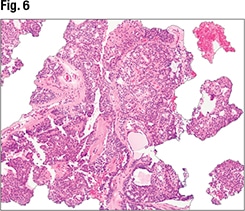December 2022—Ask Leonard Weiss, MD, what his favorite part of his schedule is, and he’s quick to answer that it’s the fieldwork: the helicopter and ambulance dispatches he accompanies once or twice a month as associate medical director of emergency medical services at the University of Pittsburgh Medical Center. Dr. Weiss, who is also assistant professor of emergency medicine and assistant medical director of Pittsburgh’s Stat Medevac service, says one of the UPMC emergency services he strongly supports is the prehospital transfusion of blood products. “Until recently, there wasn’t a lot of evidence to deploy its use on the ground as it is in the air, but thanks to extensive use by the military and scientific evidence of the value of prehospital transfusion,” he says, it is more likely to become part of some hospitals’ emergency medicine programs. The 911 ground-based transfusion program at UPMC and city of Pittsburgh EMS began in 2020. As Dr. Weiss and his UPMC colleagues acknowledge, however, myriad complexities come into play.
Read More »2022 Issues
Urine test ordering—good and going for better
December 2022—Reflex urine culture algorithms have become common and have been shown to reduce urine culture utilization, but efforts to sharpen clinical decision support continue.
Read More »In fee schedule, an increase to pathology clinical labor rates
December 2022—The Centers for Medicare and Medicaid Services published on Nov. 1 its final 2023 Medicare physician fee schedule with payment rates and new policies set to take effect next year.
Read More »Digital pathology now, and where to from here
Nearly 800 registrants were at the Digital Pathology Association’s Pathology Visions meeting this fall, and 54 companies exhibited. “There was a great vibe at the meeting. People were mingling, collaborative. Digital pathology is picking up,” says DPA president Esther Abels. Her term as president will end this month and Liron Pantanowitz, MD, PhD, MHA, of the University of Michigan, will step in as president on Jan. 1.
Read More »In toxicology, unraveling the unexpected positives
December 2022—In toxicology testing, cross-reactive compounds, incomplete medical records, immunoassay performance, calibrator drift, and human error all play into unexpected positives.
Read More »New for waived-only labs: a custom GEN checklist
December 2022—Laboratories that provide only waived testing will now have a CAP accreditation program laboratory general (GEN) checklist tailored to waived test procedures, beginning with the 2022 checklist edition released in October.
Read More »Artificial intelligence in pathology: the tools, the talk
December 2022—In September, when CAP TODAY publisher Bob McGonnagle met with pathologists and representatives of companies to talk about laboratory information systems (“Lab information systems—where the needs are greatest,” https://bit.ly/LIS_112022), they talked also about artificial intelligence—innovations, clinical impact, how much interest there is. That part of their conversation follows.
Read More »First Japanese hospital lab earns CAP accreditation
December 2022—Atsushi Ohtsu, MD, PhD, director of Japan’s prestigious National Cancer Center Hospital East, reached a groundbreaking decision with his management team in February 2020: They decided to pursue CAP accreditation. While the CAP has accredited more than 40 laboratories in Japan, this was to be a first for a Japanese hospital. And it was: In September 2022, the CAP advised the cancer center (NCCE) of its success in achieving accreditation and congratulated the team for the excellence of its laboratory services.
Read More »From the President’s Desk
December 2022—Many of us were raised on alluring stories of the good old days in medicine, when physicians enjoyed long-term, respectful relationships with their patients. I grew up hearing from my father, an obstetrician/gynecologist, and my mother, a nurse, about their frustrating transition from this to a modern reality in which these relationships were strained by a seemingly impenetrable health care bureaucracy. Like so many pathologists, I have felt intimidated by such behemoths as the CMS, the FDA, and insurance companies, as well as smaller monoliths like the C-suites or dean’s office at health systems and medical schools where I have practiced. But what I have realized by working with the CAP is that dealing with these entities can be more manageable when we create positive and productive relationships with the people who work in them.
Read More »Clinical pathology selected abstracts
December 2022—Tranexamic acid is an antifibrinolytic drug that improves survival in adults with traumatic hemorrhage. To the authors’ knowledge, it has not been evaluated in a trial of injured children.
Read More »Anatomic pathology selected abstracts
December 2022—Prostatic duct adenocarcinoma, which is characterized by pseudostratified columnar epithelium, has historically been considered invasive carcinoma, although it may have an intraductal component.
Read More »Molecular pathology selected abstracts
December 2022—Infantile-onset epilepsy has a variety of underlying etiologies, including brain injury, metabolic disorders, and genetic factors. Refractory epileptic conditions in infants can result in developmental delays, poor quality of life, and increased mortality rates.
Read More »Q&A column
December 2022 Q. What is the appropriate way to measure or identify microcytosis or macrocytosis? Read answer. Q. A six-year-old female with B-cell acute lymphoblastic leukemia and Rh-negative blood is being treated with myeloablative chemotherapy to achieve durable remission or as a bridge to stem cell transplantation, during which supportive transfusions will include repeated platelet transfusions over many weeks. Clinicians are concerned that the patient could become alloimmunized to the D antigen, which, in turn, could affect her ability to eventually bear children. Apheresis platelets contain a small but finite amount of RBC contaminants, which are not usually quantitated. An optimal strategy to prevent anti-D alloimmunization is to use Rh-negative platelets, but they are often in short supply and cannot be ordered stat in a timely enough manner to ensure every platelet transfusion episode is Rh-negative. We considered using Rh immune globulin (RhIg). However, we recognize that commercial RhIg is designed to prevent D alloimmunization in the setting of obstetric fetal-maternal bleeding. Is there an optimal dose for RhIg or suggested timing of administration to prevent anti-D alloimmunization in this setting? Read answer.
Read More »Newsbytes
December 2022—To safely and effectively extend the process of conducting point-of-care testing to staff from various hospital departments is no easy feat. That’s why four full-time employees at Children’s Hospital Los Angeles oversee POC testing, relying heavily on middleware, analytics, and exception-management tools.
Read More »Put It on the Board
December 2022—The Food and Drug Administration has approved the Ventana FOLR1 (FOLR1-2.1) RxDx Assay, the first immunohistochemistry companion diagnostic test to aid in identifying epithelial ovarian cancer patients who are eligible for targeted treatment with Elahere (mirvetuximab soravtansine-gynx). Elahere is a first-in-class antibody-drug conjugate therapy developed by ImmunoGen and approved under the FDA’s accelerated approval program for the treatment of FRα-positive platinum-resistant ovarian cancer.
Read More »Bright prognosis for brain injury biomarkers
November 2022—The lack of tools for assessing traumatic brain injury has long bedeviled physicians. There’s CT. And then? “This has been an unmet medical need for years,” says Ramon Diaz-Arrastia, MD, PhD, the John McCrea Dickson, MD, professor of neurology and director of the Clinical Traumatic Brain Injury Research Center, University of Pennsylvania Perelman School of Medicine. “As many of us know, it’s one of the major barriers that has hindered clinically advanced development of new therapies in TBI. And I think it’s pretty clear that the clinical evaluation alone leaves a lot to be desired.” “I am always frustrated that we have limited tools,” agrees Frederick Korley, MD, PhD, associate professor and associate chair for research in emergency medicine, University of Michigan Medical School, and scientific director, Massey TBI Grand Challenge, Weil Institute, University of Michigan. That’s now on the cusp of changing. Blood-based biomarkers for brain injury may not be bellying up to the bar just yet, but they are starting to raise the bar for how physicians assess TBI.
Read More »Is apolipoprotein B the best measure of CVD risk?
November 2022—The evidence in favor of measuring apolipoprotein B routinely, with other lipid parameters, is now so overwhelming, says cardiologist Allan Sniderman, MD, that he believes it’s unreasonable to deny patients the advantage of apoB. “If evidence is what counts,” he says, “then the care Americans receive should include apoB.”
Read More »Canadian pathology study finds high burnout prevalence
November 2022—Burnout among Canadian pathologists is prevalent, pain related for some, and workload driven for many. “There needs to be more of us,” says Julia Keith, MD, associate professor in the Department of Laboratory Medicine and Pathobiology at the University of Toronto.
Read More »In toxicology, puzzling out the unexpected negative
November 2022—In cases of unexpected negative results in toxicology testing, avoid overinterpretation, know your assays and providers, and don’t put off definitive testing when it’s needed, though it’s not a panacea.
Read More »The who, what, and when of respiratory virus testing
November 2022—In mid-October, flu was picking up, with high levels of activity in Texas, Georgia, the District of Columbia, South Carolina, Tennessee, and New York. Elsewhere, it was still on the lower side, with less known about what was to come but plans in place. And questions, too, about laboratory testing as it relates to SARS-CoV-2, “which is going to be a challenge,” says David Peaper, MD, PhD, D(ABMM), a member of the CAP Microbiology Committee.
Read More »No time to wait: How rapid NGS changed cancer care
November 2022—Rapid next-generation sequencing in a community hospital setting, performed by histotechnologists and interpreted by anatomic pathologists, is possible and paying off, and it “makes the pathologist a much more meaningful part of the precision oncology team,” says Brandon Sheffield, MD, of the Department of Laboratory Medicine, William Osler Health System, Brampton/Etobicoke, Ontario. “It has changed practice at our hospitals,” he says.
Read More »Lab information systems—where the needs are greatest
November 2022—What labs want and need from their lab information systems and what the missing pieces are in interoperability are what pathologists and LIS company reps talked to CAP TODAY publisher Bob McGonnagle about when they met online Sept. 12. “The biggest challenge is with device integration” in molecular testing, said J. Mark Tuthill, MD, of Henry Ford Health System. “We have million-dollar instruments and we’re still programming runs manually. We don’t have HL7 order feeds. We don’t have the ability to get result feeds outbound from those devices.”
From the President’s Desk
November 2022—Like me, many of you can remember when you first thought about specializing in pathology, a decision that for a lot of us was made difficult by the notion of “disappearing” from the scene—working behind the scenes and in relative obscurity. As a specialty we are not as self-explanatory as surgery or pediatrics; indeed it can be exhausting for all concerned to explain, even to our fellow physicians, what we do. And so we often find ourselves somewhere between disregarded and misunderstood. Despite this, there is no other specialty with comparable impact. We are aware each time we sign a pathology report that a cascade of usually predictable consequences will ensue, and that upon this work the types of treatment, expectations for response, and tenor of conversations will depend. We know each time we validate a new test, review quality metrics, or accept a specimen for testing that subsequent laboratory results will be accepted as credible and acted upon. In short, while pathologists are not always visible, there can be no doubt that pathologists are palpable.
Read More »Clinical pathology selected abstracts
November 2022—Exposure to lead may cause severe illness in children, including neurological damage, organ failure, and even death. The Centers for Disease Control and Prevention and other agencies recommend routine testing for blood lead levels (BLL) as part of a well-child examination to identify elevated levels and, subsequently, eliminate exposure to lead and initiate therapeutic interventions.
Read More »Anatomic pathology selected abstracts
November 2022—Appendiceal mucinous neoplasms show a range of morphologic features and biological risk. At one end of the spectrum, high-grade adenocarcinomas are cytologically malignant and exhibit infiltrative invasion, lymph node metastases, and behavior similar to that of extra-appendiceal mucinous adenocarcinomas.
Read More »Molecular pathology selected abstracts
November 2022—Spontaneous coronary artery dissection is an uncommon cause of acute heart attack. It is not associated with high cholesterol or atherosclerosis but, instead, occurs when a small tear or separation in the wall of the coronary artery leads to blood entering a false lumen, occluding blood flow and impairing oxygenation of the heart muscle.
Read More »Pathology informatics selected abstracts
November 2022—Lab test result formats are not standardized, potentially causing confusion when the same test results are displayed differently—for example, when a positive pregnancy test appears as +, P, or positive, or an indeterminate test result appears as DNR, which could be interpreted to mean did not report, did not react, or even do not resuscitate. Because of this issue, the authors trialed standard laboratory result formats across the 130 facilities that are part of the Veterans Health Administration, each of which has one or more CLIA-certified laboratories. The authors selected the most common laboratory tests from each facility, which composed at least 95 percent of a facility’s monthly laboratory test volume between 2000 and 2015. They then specified the standard result formats for these tests based on the facilities’ feedback. Personalized emails were sent weekly, over a 15-week period in 2016, to the facilities’ lab information systems managers, lab managers, and laboratory directors.
Read More »Q&A column
November 2022 Q. Is secretory change in endometrial hyperplasia acceptable in the absence of progestin therapy? What is the appropriate way to address an endometrial biopsy with secretory glandular changes and an increase in the gland-to-stroma ratio? Read answer. Q. I want to inquire about verification of target mean/ranges for hematology analytes. We run a control material 20 times and calculate statistics such as mean, standard deviation, and coefficient of variation. We also calculate total analytical error based on a formula (TAE = bias + 2 SD) and compare the TAE with the allowable total error recommended by CLSI and other sources. For example, if TAE for platelets (based on reading control material 20 times) is less than 25 percent (a CLSI recommended value), we accept the target range; otherwise, we reject it. However, since low concentrations of analytes are prone to a higher degree of variation, the aforementioned target range verification process frequently fails. Is it necessary to accept or reject established target values based on total analytical error? Or is there an alternative way to do that? Read answer. Q. Should an accelerated APTT result be canceled for being clotted, even in the absence of a visible clot? Read answer.
Read More »Newsbytes
November 2022—Bias—a type of prejudice that may go back to the beginning of humankind—has, in recent years, been the focus of attention with regard to developing machine-learning algorithms for clinical laboratory testing.
Read More »Put It on the Board
November 2022—Volatile, uncertain, complex, ambiguous. Stan Schofield, president of NorDx and senior VP at MaineHealth, told Compass Group members at their September meeting in Albuquerque that those words describe the state of play for labs today.
Read More »The art and science of positive blood cultures
October 2022—It might be possible to tot up, using only the number of toes on an ordinary foot, how many labs are feeling full of vim and vigor these days, open to concepts like creative destruction and get those creative juices flowing and have fun with it—slogans once easily uttered but now tiring to enact. Nevertheless, Margie Morgan, PhD, D(ABMM), would like her colleagues to at least consider the possibility of inspiration in the microbiology laboratory. In particular, Dr. Morgan, medical director of microbiology and professor of pathology and laboratory medicine, Cedars-Sinai Medical Center, Los Angeles, has some thoughts about using a new automated system to facilitate rapid microbial identification from positive blood cultures. The Arc system, from Accelerate Diagnostics, is composed of the Arc module and blood culture kit and concentrates organisms recovered in positive blood cultures for direct testing on MALDI-TOF mass spectrometry. Dr. Morgan and colleagues have been using the system since February.
Read More »Platelet transfusions: safety, cost, and workflow
October 2022—The jury may no longer be out on whether pathogen reduction of platelet units reduces the risk of a septic transfusion reaction enough to replace culturing of platelet units.
Read More »Checklists now made to fit for next-gen sequencing labs
October 2022—As the diagnostic uses for next-generation sequencing have grown, so too has the length of the NGS section of the CAP molecular pathology accreditation program checklist. Now, with the release of the new checklist edition this month, NGS laboratories will find the NGS section in their customized checklists leaner, more relevant, and easier to read.
Read More »Sodium measurement—when the method matters
October 2022—William E. Winter, MD, D(ABCC), is blunt about whether to report a corrected sodium: He would worry if his name were on such a report. “I think you have to be careful about formulas,” he said in his “hot topic” talk at the AACC meeting in July.
Read More »Purchased for the pandemic? Rethinking instrumentation
October 2022—Who’s doing what with instruments purchased at the peak of the pandemic? That and next-generation sequencing are what CAP TODAY publisher Bob McGonnagle asked Compass Group members about when they met virtually on Sept. 6. The Compass Group is an organization of not-for-profit IDN system laboratory leaders who collaborate to identify and share best practices and strategies.
A wait-and-watch season of respiratory viruses
October 2022—Influenza incidence and what it will mean for testing in this respiratory virus season is a wild card, as is how SARS-CoV-2 will evolve. In early September, SARS-CoV-2 prevalence was declining in parts of the United States. “And if you believe in the theory of viral interference,” says Michelle Tabb, PhD, chief scientific officer at DiaSorin Molecular, “it’s leaving the door wide open right now for something else to step in. We’ll see if that’s RSV, or flu A, or if it’s a new COVID variant.”
Read More »Scoring HER2 expression across the full spectrum
October 2022—HER2-low breast cancers are now of greater clinical interest, given Enhertu’s recent approval for use in treating such cancers. How to achieve accurate and reproducible results in scoring HER2-low tumors was at the center of a CAP TODAY webinar on new perspectives on the full spectrum of HER2 expression in breast cancer.
Read More »Enabling ‘the magic’ in hematology—eyes on what labs need
October 2022—New and better solutions for the hematology laboratory. That was at the center of a Sept. 2 virtual roundtable, led by CAP TODAY publisher Bob McGonnagle. With him were Jonathan Galeotti, MD, of the University of North Carolina School of Medicine, and representatives of Sysmex America, Siemens Healthineers, Beckman Coulter, and CellaVision. “It’s a new era in terms of what can happen in hematological data,” said Fernando Chaves, MD, global head of hematology, Siemens Healthineers.
Read More »From the President’s Desk
October 2022—When I was in pathology training back in the ’90s, physicians carried around an index card for each patient, with all of the information we needed to know about them easily covered in that small space. Today, the practice of medicine—and specifically the practice of pathology—looks very different in the era of big data. Of course, we still have to fill our traditional roles: making the correct diagnosis for individual patients and ensuring the integrity of laboratory results. But increasingly large data sets inform the diagnosis in individual cases and, at the same time, individual cases become data points in large data sets that inform the health of populations. Beginning in the 2000s with the value-based care movement and accelerating with the rise of high-parameter tests, we find ourselves having to be data scientists as much as physicians. We are being asked to incorporate data-heavy tests and pipelines, some of which require clinical decision support algorithms that demand a certain fluency with more sophisticated software. We find ourselves in the new position of considering population health in addition to patient health, an element that can involve predictive analytics and data mining.
Read More »Clinical pathology selected abstracts
October 2022—Cardiovascular health is often linked to dementia, and compelling evidence indicates that there are modifiable risk factors for dementia, knowledge of which may also benefit vascular health. In previous studies, hypercholesterolemia and cardiovascular pathology were associated with the apolipoprotein E (APOE) ε4 genotype and cognitive function.
Read More »Anatomic pathology selected abstracts
October 2022—Uterine carcinosarcoma is an aggressive malignancy with few treatment options. A recent clinical trial has shown an increase in progression-free survival in patients with human epidermal growth factor receptor 2 (HER2)-positive serous endometrial carcinomas treated with anti-HER2–targeted therapies.
Read More »Molecular pathology selected abstracts
October 2022—Immune checkpoint inhibitors are cancer treatments that function as an immune checkpoint blockade, strengthening a person’s immune response to a tumor. These medications have revolutionized the treatment of patients with metastatic or unresectable cancers, significantly improving life expectancy.
Read More »Q&A column
October 2022 Q. How many blocks should a histotechnologist with multiple responsibilities cut per day in a semiautomated laboratory? Read answer. Q. Is it acceptable to release results from an analyzer with flags or alarms if a pathologist sends an email instructing to do so, even if the manufacturer’s instructions state that results with flags or alarms should be verified by another method before reporting? I am referring to hematology analyzer auto-differential results with asterisk flags. The emailed instructions from the pathologist are applied to all samples but are not incorporated into our standard operating procedure. We report auto-differential results that have asterisk flags and then perform a manual differential. The report, therefore, contains two differential results that, when compared, are almost always different clinically and statistically. Read answer. Q. How useful is an aPTT value if the value falls below the reference interval? Read answer.
Read More »Newsbytes
October 2022—Cater to your audience, while sage advice, can be a challenging proposition when it comes to choosing a biobank information system. Unlike clinical laboratories, which use lab information systems that tightly link specimen testing results to patient information in the EHR, biobanks need specimen-centric systems that can store and track samples for research purposes. Biobanks, like research laboratories, need the functionality typically found in laboratory information management systems, or LIMS, says Raj Dash, MD, pathologist and director of laboratory informatics strategy, Duke Health.
Read More »Letters
October 2022—I read with great interest your article “Transgender care, in and beyond the lab” (July 2022). In the article Gabrielle Winston-McPherson, PhD, talks about her desire to improve health outcomes, identify problems in the preanalytical process, develop training material, assemble data and information prior to implementation, address informatics challenges, and ensure proper allocation of limited resources—all of which is laudable and appears to align perfectly with our mission as pathologists. The writer reminds readers that the topic has landed in the middle of court cases, state laws, and policy debates, with “words like ‘controversial,’ ‘issue,’ ‘politics,’ ‘traditional family values,’ and ‘beliefs’ awkwardly mixed in with medical realities.”
Read More »Put It on the Board
October 2022—The Food and Drug Administration has granted approval to Thermo Fisher Scientific’s Oncomine Dx Target Test as a companion diagnostic to aid in selecting patients with RET-fusion-positive locally advanced or metastatic non-small cell lung cancer, RET-fusion-positive advanced or metastatic thyroid cancer, and RET-mutation-positive advanced or metastatic medullary thyroid cancer who may be eligible for treatment with Lilly’s Retevmo (selpercatinib).
Read More »Highs, lows of tumor mutation burden testing
September 2022—It may not be the oldest story in the world, but in clinical laboratories it’s an oft-told tale: Tumor meets biomarker; drug meets companion diagnostic; both meet FDA approval; clinicians meet with patients offering new hope—and those in the lab are left trying to figure out how to make it all work. That story is playing out again in the realm of measuring tumor mutational burden. In mid-2020 the FDA approved pembrolizumab as a new treatment option in adult and pediatric patients with TMB-high (≥10 mutations/megabase) solid tumors, as determined by the FDA-approved FoundationOne CDx assay. “That doesn’t sound too controversial, right?” says Alain Borczuk, MD, vice chair of anatomic pathology and director of oncologic pathology, Northwell Health Cancer Institute. “It’s not the only way in, but it’s one of the ways in. If you’re arguing for your patient that this is the biomarker that makes them eligible for the drug, then the next questions will be, What was the number? And what was the test?” And it’s off to the races.
Read More »As blood supply tightens, so too does mitigation
September 2022—Picture a performer juggling tenpins while walking a high wire, knowing that a hurricane looms. Add a safety net that could disappear at any time. That’s a sense of what hospital transfusion services experience in maintaining enough blood products to meet patients’ needs.
Read More »BNP and NT-proBNP: how they differ, what it means
September 2022—Which biomarker for heart failure should be used—BNP or NT-proBNP—and does it matter? That’s the question Christopher W. Farnsworth, PhD, set out to answer in his “hot topic” talk (one of a trio) at the AACC meeting in July.
Read More »New data on rapid rule-out using high-sensitivity cTnT
September 2022—A single high-sensitivity cardiac troponin T measurement below the limit of quantitation of 6 ng/L is a safe and rapid method to identify a substantial number of patients at low risk for acute myocardial injury and infarction, say the authors of a recently published study.
Read More »What’s required in ’23 for predictive marker tests
September 2022—Beginning next year, two additional predictive marker tests will require enrollment in proficiency testing (PT), but for any predictive marker using immunohistochemistry or in situ hybridization, only laboratories that perform both staining and interpretation must participate in CAP-accepted PT.
Read More »Need a written policy or procedure? Look for icon
September 2022—A new icon in the accreditation checklist edition to be released next month will make it easier to know if a written policy or procedure is needed for compliance with a requirement, and easier to inspect and be inspected.
Read More »‘Staff love the change’: moving to MLS and why it matters
September 2022—Never a better time than now to switch from the medical technologist job title to medical laboratory scientist. So says John Waugh of Henry Ford Health System, where the job title was formally changed. “Because our people are scientists,” he explains. Waugh and other Compass Group members met online Aug. 2 with CAP TODAY publisher Bob McGonnagle, where they talked about the job title and testing for monkeypox.
Read More »From the President’s Desk
September 2022—Like so many pathologists, I have been keeping a close eye on the VALID Act, which would create a new framework for FDA oversight of laboratory-developed tests (LDTs). As I write this, the VALID Act has been voted out of a Senate committee and now awaits further action by the full Senate. I have heard from some pathologists and laboratorians who are concerned about this legislation and about the CAP position on it since the Senate HELP Committee released a draft on May 17, 2022. If you have not followed this bill and the issues of LDT oversight, allow me to offer some context. Regulatory oversight of LDTs has been in active discussion since 2008 when the FDA intervened with a national reference laboratory that was selling a test that had been developed at a prestigious university to identify high-risk women who might have ovarian cancer. Patient advocacy groups had raised a concern because several women had undergone unnecessary prophylactic bilateral oophorectomy based on this LDT. In response, the FDA expressed concern about the public harm, and the reference laboratory pulled the test from the market.
Read More »Clinical pathology selected abstracts
September 2022—Clinical laboratory workforce shortages are an issue, in large part because it is difficult to find qualified testing personnel. Pathology residents present a solution to this problem because MD and DO residents who have current training certificates or medical licenses and who are trainees in pathology or other specialties can qualify to perform high-complexity testing.
Read More »Anatomic pathology selected abstracts
September 2022—Hypergastrinemia states, such as achlorhydria from gastric mucosal atrophy or a gastrin-producing tumor, have been associated with the development of enterochromaffin-like cell hyperplasia and gastric neuroendocrine tumors.
Read More »Pathology informatics selected abstracts
September 2022—Artificial intelligence in pathology has progressed recently, with at least four machine-learning algorithms classified for clinical use in the United States. While many challenges of implementing AI in pathology labs are well documented, one area that has not received much study is how an AI algorithm designed to augment pathologist performance will impact pathologists’ clinical decisions.
Read More »Molecular pathology selected abstracts
September 2022—The widespread availability of next-generation sequencing-based somatic mutation analysis of solid tumors has led to the routine identification of patients eligible for FDA-approved targeted therapies, including immunotherapies. However, validated targeted therapies are available for only a small number of mutations, thereby preventing many patients from realizing the benefits of these life-extending modalities. With a focus on reducing the gap in eligibility for targeted therapy, the authors conducted a large-scale retrospective analysis of interactions between mutations, drug responses, and long-term cancer survival outcomes. They performed the analysis using the nationwide U.S.-based Flatiron Health–Foundation Medicine clinicogenomic database. The authors analyzed data on more than 40,000 patients from approximately 280 cancer clinics.
Read More »Q&A column
September 2022 Q. The laboratory at which I work uses two proficiency testing programs—from the CAP and an alternate provider—for dermatologists who perform fungal smears. Our laboratory administers challenges for both programs every six months. The dermatologists have variably passed and failed challenges from both programs such that the record of satisfactory challenges alternates between the CAP and the alternate provider’s programs. Is our approach allowed? Do we need to stick with a single PT provider for one year before switching? Read answer. Q. Should flow cytometry be used to test a cerebrospinal fluid specimen with known or suspected Creutzfeldt-Jakob disease? Our hospital administration is pushing to run such samples. I think the testing should not be done because it would contaminate the instrument and potentially endanger the flow techs. Read answer.
Read More »Newsbytes
September 2022—Do you want to play a role in solving a problem or improving a process in your laboratory via machine learning or artificial intelligence but don’t know where to begin? If so, take some time to learn, listen, share, and, perhaps, have a cup of coffee, says Scott Doyle, PhD, biomedical engineer at the State University of New York at Buffalo.
Read More »Put It on the Board
September 2022—The Food and Drug Administration on Aug. 11 granted accelerated approval to Enhertu for adult patients with unresectable or metastatic non-small cell lung cancer whose tumors have activating HER2 (ERBB2) mutations, as detected by an FDA-approved test, and who have received a prior systemic therapy. Enhertu (AstraZeneca and Daiichi Sankyo) is the first drug approved for HER2-mutant NSCLC.
Read More »U.S. blood supply steadier but still short
August 2022—Blood is a precious resource and shouldn’t be treated as a commodity. That’s the consensus in the blood banking community, in line with a longstanding conviction that volunteer donations should remain at the blood system’s core. But as the worst of the pandemic appears to have passed, discussion of blood shortages has increasingly drawn on the vocabulary of commerce, and the warnings about the blood supply have been rife with references to supply chain problems that go beyond the need for more donations. Crises in the blood supply are nothing new, and while the health care system strives to stay prepared, the pandemic threw novel commercial and logistical factors into the mix, in some ways jumbling the expected order of a crisis for blood services. Hospitals scrambled to cope with a surge of COVID-19 patients while the spread of infection caused thousands of blood drives to be canceled, so there was a steep drop in supply of blood products, says Pampee Young, MD, PhD, chief medical officer, biomedical services, American Red Cross.
Read More »Autoverification: lessons drawn from a core lab
August 2022—Just as there is scant room in this world for pink “While You Were Out” notepads, paper checks, or the copying skills of Bartleby the Scrivener, laboratories would do well to leave manual result verification in the past.
Read More »A practical approach to borderline melanocytic neoplasms
August 2022—In cases of borderline melanocytic neoplasms, which have overlapping histopathologic features of benign and melanocytic lesions, additional immunohistochemical studies sometimes help to differentiate the two. But a subset of lesions will show overlapping features.
Read More »Looking for lab staff here, there, and overseas
August 2022—Higher wages help to fill open positions, when they can be offered, but in a labor market that’s as tight as ever, they’re often just a start. That’s why many laboratories are casting wider nets, though the hiring solutions tend to be long term.
Read More »Infectious diseases of the gut
August 2022—The atypia in Epstein-Barr virus-positive mucocutaneous ulcers can mimic diffuse large B-cell lymphoma or classical Hodgkin lymphoma, a diagnostic pitfall that can result in overtreatment. And esophageal ulcers in immunocompromised patients should trigger cytomegalovirus immunohistochemistry in addition to GMS and herpes simplex virus-1 and -2 stains.
Close-up on HER2 alterations in advanced NSCLC
August 2022—HER2 is a known oncogenic driver and emerging biomarker in non-small cell lung cancer, and while the therapeutic implication is not yet fully known in NSCLC, “we need to pay attention to it,” said Fred R. Hirsch, MD, PhD, executive director of the Mount Sinai Center for Thoracic Oncology and associate director, Tisch Cancer Institute, in a CAP TODAY webinar sponsored by Daiichi-Sankyo and AstraZeneca.
Read More »Savings, schedules, new automation—labs weighing it all
August 2022—Running into the reality of staffing. Those are the words of a pathologist who said in the most recent Compass Group roundtable that its health system is making a push to obtain and test specimens “as close to home as possible.” Another Compass Group member said planning is underway for the new hospitals his system is going to build, “but we don’t know where staff will come from.” Here is what they and others told CAP TODAY publisher Bob McGonnagle on July 5.
Read More »Cytopathology in focus: Protocol for reporting cervicovaginal cytology specimens
August 2022—The protocol for the reporting of cervicovaginal cytology, the first in a series of CAP cytopathology protocols, became available for use in a synoptic format on June 22. This protocol is a collaborative effort, based on input from past and present members of the CAP Cytopathology Committee and prepared in conjunction with the CAP Pathology Electronic Reporting Committee. It was presented via webinar to the CAP House of Delegates on March 31. A two-week open comment period followed; all comments were reviewed and appropriate changes were incorporated into the protocol.
Read More »Cytopathology in focus: Advances in detection of mesothelioma in cytology pleural fluid specimens
August 2022—The ability to make a definitive diagnosis of mesothelioma on pleural fluid cytology has been questioned and debated for a long time. The 2018 American Society of Clinical Oncology clinical guidelines limit the cytological diagnosis of pleural fluid specimens only as an initial screening test for mesothelioma. Monaco, et al., discuss in their article the appropriate use of ancillary studies (immunohistochemistry and fluorescence in situ hybridization studies) to make a definitive diagnosis of mesothelioma in small tissue samples, which are often processed as cell blocks. The authors recommend a stepwise approach starting with immunohistochemistry for BAP1 and, next, MTAP in cases of atypical mesothelial proliferations where the suspicion for malignant mesothelioma is high.
Read More »From the President’s Desk
August 2022—The CAP has been advocating for an increase in residency slots that would help give more young physicians the opportunity to embrace careers in pathology. We support the Resident Physician Shortage Reduction Act, bipartisan legislation that is working its way through both chambers of Congress. It would add 14,000 Medicare-supported residency slots over the course of seven years and help ensure an open pipeline for pathologists. Between pandemic burnout and the retirement cliff resulting from an aging population of physicians, we are facing a shortage of all physicians, pathologists included. The CAP projects that the number of pathologists will shrink in the coming years. Unfortunately, when there are not enough pathologists to lead clinical laboratory teams, it creates a gap that has to be filled somehow. Many of us have already seen health care gaps being filled by people with less extensive and intensive training.
Read More »Clinical pathology selected abstracts
August 2022—Prostate cancer is the second leading cause of cancer death in men, following lung cancer. It is necessary to balance efforts to identify prostate cancer in the early stages against complications and harms from overtreatment and overdiagnosis.
Read More »Anatomic pathology selected abstracts
August 2022—Mucocele-like lesion of the breast is an uncommon entity. Studies show low rates of upgrade from core needle biopsy to excision. The authors conducted a study to evaluate features associated with upgrade of cases of mucocele-like lesion of the breast (MLL) diagnosed on core needle biopsy.
Read More »Molecular pathology selected abstracts
August 2022—Surgical resection remains the mainstay of treatment for locally advanced (stages II and III) colorectal carcinoma. Patients with node-positive (stage III) cancer receive adjuvant chemotherapy after surgery.
Read More »Newsbytes
August 2022—Transfusion medicine specialists at Phoenix Children’s Hospital may be used to trending laboratory biomarkers for sickle cell disease patients in their heads, but a dashboard supporting red blood cell exchange procedures for such patients eases the burden on their cerebral cortices.
Read More »Q&A column
August 2022 Q. Every month our anatomic pathology laboratory amends patient reports. Does the CAP have a benchmark for amended reports, such as how many are acceptable per month? Read answer. Q. What is the best practice for performing a urine specific gravity test? Which method is preferred—a refractometer or an automated dipstick? Should we correct for elevated glucose and protein or report high specific gravity? Should we correct for x-ray dyes or add a comment and list possible interfering substances? Read answer.
Read More »Put It on the Board
August 2022—The FDA has granted breakthrough device designation to Roche’s Elecsys Amyloid Plasma Panel for detection of early Alzheimer’s disease. It detects and measures AD biomarkers in blood plasma to indicate the need for further confirmatory testing.
Read More »Transgender care, in and beyond the lab
July 2022—Gabrielle Winston-McPherson, PhD, could be talking about almost any aspect of laboratory medicine as she recounts how the Henry Ford Health chemistry division, in which she is associate director, has identified a patient care need. She talks about the desire to improve health outcomes. Identifying problems in the preanalytical process. Appropriate test utilization. Putting together a team to develop training material. Assembling data and information prior to implementation. Informatics challenges. And, naturally, the perpetual financial concern of ensuring allocation of limited resources. How else would she—or any other laboratory professional—talk about the lab’s role in transgender health care? In fact, there are many other ways to discuss the topic. “It’s been in the news a lot these days, obviously,” says Matthew Krasowski, MD, PhD, clinical professor and vice chair, clinical pathology and laboratory services, University of Iowa Hospital and Clinics. In fact, there are many other ways to discuss the topic.
Read More »Monoclonal gammopathies: which tests and why
July 2022—Variability in testing for monoclonal immunoglobulin proteins was in part what led to the new guideline on laboratory detection and initial diagnosis of monoclonal gammopathies, published in May.
Read More »Histology lab tips for top-tier whole slide images
July 2022—Good slides in, good images out. Liron Pantanowitz, MD, MHA, explained how to get those good images in a recent webinar on preanalytics quality control in digital pathology, sponsored by Sunquest and made available by the Association for Pathology Informatics.
Read More »Emergency department tests HIV screening strategy
July 2022—Thanks to more than two years’ experience with SARS-CoV-2, perhaps at no point in U.S. history has the general public been as aware of antigen and PCR testing, and the difference between them, as it is now.
Read More »‘A struggle every day’—outpatient center decisions
July 2022—A time of tough choices. A complex dance. This is how Compass Group members on a call with their colleagues, led by CAP TODAY publisher Bob McGonnagle, describe what it’s like to cover outpatient centers amid severe staff shortages. “We are consuming significant resources to get all our locations staffed,” one member says. Another predicts: “We will not be out of this staffing situation for 10 years.” Here is more of what they and others talked about on June 7 as COVID positivity rates were up and monkeypox was in the news. The Compass Group is an organization of not-for-profit IDN system laboratory leaders who collaborate to identify and share best practices and strategies.
Read More »One hospital’s story: Ins and outs of low titer O whole blood use in trauma
July 2022—Myriad questions had to be answered and plans made to put low titer O whole blood in the trauma bay at Thomas Jefferson University Hospital. Julie Katz Karp, MD, associate professor and director of transfusion medicine, reported why, when, and how it was done and where they stand today, in a process she describes as “a never-ending series of hoops.”
Read More »What’s bugging the gut? A team approach
July 2022—Gut pathogens, their histologic features, and a GI pathology and microbiology team approach to diagnosis were the focus of a CAP21 session, “What’s Bugging the Gut?” Maryam Zenali, MD, Alina Iuga, MD, and Christina Wojewoda, MD, presented a series of cases and highlighted the features, the differential diagnoses, and the integrated workups. Three of their cases follow here, with others to be reported in an upcoming issue.
Read More »How close to patients? Cost, quality, competition
July 2022—Point-of-care versus centralized testing, and automation, IT, and staffing. It all came together as industry executives and a laboratory director and a former medical director met with CAP TODAY publisher Bob McGonnagle on May 25, as CAP TODAY’s list of chemistry and immunoassay analyzers was going together. “I don’t worry much about the machines or reagents,” thanks to good-quality practices, said André Valcour, PhD, MBA, DABCC, of Labcorp, who noted the real focus is quality of information and information transfer. Susan Fuhrman, MD, formerly of OhioHealth, said, “We should always give our clinicians as much information as we can accurately produce and our reports should be as clear as we can make them.” And of the staffing crisis: “We have a perfect storm,” she said. Here is more of what they and the others had to say.
Read More »From the President’s Desk
July 2022—The CAP has been looking to identify areas where pathologists can help overcome institutional bias in medicine. As you may have seen, the CAP recently issued a statement supporting a new position from the American Medical Association that calls for a change to the FDA’s policy about blood donations from men who have sex with men. The current rule, established in early 2020 in response to a drastic blood shortage associated with pandemic lockdowns, prohibits blood donations from gay or bisexual men who have engaged in sexual activity in the prior three months. Previously, only gay or bisexual men who abstained from sex for a full year were eligible to donate blood. Many of you remember as I do the societal rejection of HIV-positive patients that occurred in the late ’80s. I was in medical school at this time, working at the county hospital in Kansas City, Mo. A lack of access to health care elsewhere was only one form of rejection to which our HIV-positive patients were subjected.
Read More »Clinical pathology selected abstracts
July 2022—A complete blood count with a white blood cell differential (CBCD) is often ordered when a CBC alone would suffice. Even though a CBCD can be performed with automated technology, it requires more reagents than a CBC. Furthermore, if an automated CBCD is flagged, a laboratory will perform a manual WBC differential, adding to labor and material costs.
Read More »Anatomic pathology selected abstracts
July 2022—Helicobacter pylori-associated gastritis and autoimmune gastritis may coexist in a subset of patients, necessitating treatment for both disorders. The authors conducted a study to identify autoimmune gastritis in the background of H. pylori infection.
Read More »Pathology informatics selected abstracts
July 2022—Numerous factors affect blood product inventory in hospitals. Among them are component-processing methods, geographic population characteristics, available medical procedures, diagnostic categories, and global epidemics.
Read More »Molecular pathology selected abstracts
July 2022—Although offspring share similar DNA, their physical and behavioral differences are multifactorial. One of those factors is epigenetics, the chemical and structural modifications of DNA by proteins and enzymes. Whereas the DNA sequence is relatively stable, epigenetic modifications are dynamic, as they are critical to controlling gene expression in response to cellular development and environment. Reproductive cells, or gametes, carry half the normal set of chromosomal DNA. Advances in molecular technologies demonstrate that this DNA is epigenetically modified to influence traits of future offspring, referred to as transgenerational epigenetic inheritance.
Read More »Q&A column
July 2022 Q. When a patient has a hematocrit level of ≥55 percent and a normal PT and APTT, do you still correct sodium citrate and ask for a redraw? Is it crucial to ask for a redraw when the emergency department orders a stat PT and APTT? Read answer. Q. Obtaining an accurate blood glucose level is hindered by continued glycolysis in the evacuated tube post collection, even if a gray top tube is used. This leads to falsely low blood glucose levels. What can laboratories do to limit ex vivo glycolysis? Read answer.
Read More »Newsbytes
July 2022—If a machine-learning algorithm is trained to help detect cancer in whole slide images at one health care location, shouldn’t the same algorithm work on digital slides from a similar patient population at another site?
Read More »Put It on the Board
July 2022—Paige has received CE-IVD and UKCA (UK Conformity Assessed) marks for its HER2Complete artificial intelligence software. In a recent study, HER2Complete was able to detect levels of HER2 expression in HER2-negative (IHC 0) and HER2-low (IHC 1+/2+) H&E-stained tissue samples, Paige said in announcing the news.
Read More »Breast cancer breakthrough sparks HER2 quest
June 2022—The latest advance in breast cancer treatment is a big one—the promising antibody drug conjugate fam-trastuzumab deruxtecan-nxki, or T-DXd (Enhertu). The drug was granted breakthrough therapy designation this spring for patients with HER2-low metastatic breast cancer, and the drug and trial on which the decision was based were the focus of the plenary session at the ASCO annual meeting in early June. “This drug in particular is a variant of a drug we are all very familiar with—Herceptin, or trastuzumab,” says David Rimm, MD, PhD, the Anthony N. Brady professor of pathology, professor of medicine (oncology), director of the translational pathology and Yale pathology tissue services, and director of the physician scientist training program in pathology, Department of Pathology, Yale University School of Medicine. Also familiar: the IHC test to determine eligibility for the drug, a companion diagnostic developed decades ago. But that’s where easy familiarity ends.
Read More »A single pathway for HIV testing and therapy
June 2022—By revealing the value of a diagnostic algorithm using quantitative RNA as the second test to confirm reactive HIV screening results, Daniel Gromer, MD, and colleagues say their simulation modeling suggests clinical improvement over the standard-of-care algorithm, and at lower cost if HIV specimen positivity is high.
Read More »The post-sophomore fellowship and other pieces of the pipeline
June 2022—Jobs in pathology are plentiful and positions are hard to fill, which has put the pipeline in the limelight. CAP TODAY publisher Bob McGonnagle led a virtual discussion with two pathologists and a pathology resident.
Read More »Lining up for low titer O whole blood in trauma care
June 2022—For many blood suppliers, there is more enthusiasm for low titer O whole blood than there is an ability to make it, especially with the pandemic having made it harder than ever to collect.
Read More »Fluid cytology—key features and ancillary testing
June 2022—What to look for in serous fluid cytology is what Eva M. Wojcik, MD, of Loyola University in Chicago, and Xiaoyin “Sara” Jiang, MD, of Duke Health, set forth in their CAP21 session last year.
Read More »AACC session to zero in on cannabis and driving
June 2022—The effects of acute cannabis on driving performance and how impaired drivers can be detected will be reported at the AACC annual meeting July 24–28. Sessions on serum COVID-19 antibodies and lab workforce solutions are two more of the many that await attendees in Chicago.
Read More »Compass on ‘consumerizing health care’ and more
June 2022—What stood out among all that was seen and heard at the Executive War College? Compass Group members who were there answer CAP TODAY publisher Bob McGonnagle’s question in their early May virtual get-together, shortly after the War College took place. Here’s what they and other lab leaders said about retail lab testing, digital pathology and artificial intelligence, and their plans for the future.
Read More »Race in medicine: Is it data or distraction?
June 2022—How race shows up in the medical school curriculum and what to do about it was the focus of a grand rounds by Andrea T. Deyrup, MD, PhD, and Joseph L. Graves Jr., PhD, presented virtually this spring to the University of Minnesota Department of Laboratory Medicine and Pathology, on behalf of the department’s diversity, equity, and inclusion committee.
Read More »From the President’s Desk
June 2022—You’re probably familiar with the expression “jack of all trades, master of none.” While that sounds disparaging, it’s actually taken out of context. The original quote in its entirety is, “A jack of all trades is a master of none, but oftentimes better than a master of one.” It was intended as a compliment for someone who had good, broad knowledge. The widespread misinterpretation of that quote supports a common idea that no individual can be really good at a lot of different things. But pathologists challenge that concept every day. While many of us subspecialize, we are able to fall back on our broad training when circumstances require it. Such may be the case when encountering pathologic findings that indicate a disorder not commonly found in our area of expertise, or findings that indicate a systemic illness. Many of us find that we have to be experts on different things on different days and in different parts of our career.
Read More »Clinical pathology selected abstracts
June 2022—Medical student visiting, or “away,” rotations usually occur in medical students’ fourth year and often align with participants’ specialty of interest at an institution for which they have an interest in the residency program.
Read More »Anatomic pathology selected abstracts
June 2022—Appendiceal orifice mucosae often appear inflamed endoscopically, even when other colonic segments appear normal. Histological findings in biopsy samples taken from endoscopically abnormal mucosae may simulate a variety of inflammatory colitides.
Read More »Molecular pathology selected abstracts
June 2022—Sickle cell disease is caused by a point mutation in the gene encoding β-globin and is characterized by chronic hemolytic anemia, painful vaso-occlusive events, and increased risk of early death. The disease can be managed using supportive therapy, but this does not halt its progression.
Read More »Newsbytes
June 2022—Laboratories seeking a means to query their repository of archival anatomic pathology reports would do well to follow the advice of former tennis star Arthur Ashe: “Start where you are, use what you have, do what you can.”
Read More »Q&A column
June 2022 Q. Can bronchoalveolar lavage specimens from multiple lobes be pooled for culture? Can multiple biopsies from the same joint be pooled for culture? Read answer. Q. We verify our reference intervals with each new reagent lot for coagulation tests (PT, APTT, fibrinogen, and TT). What difference in values between lots necessitates establishing a new reference interval? A CAP TODAY Q&A from January 2015 mentions limits within 1.5 seconds of each other between new and old reagent lots for human recombinant PT. What about limits for APTT and fibrinogen? Read answer.
Read More »Letters
June 2022—The CAP issued a statement on April 5 in support of the ADVANCE study, which hopes to end discriminatory practices based on sexual identity and/or sexual orientation in donor risk assessments and deferral periods for blood donation. Originally, the FDA instituted such discriminatory criteria on the assumption that potential donors who are gay and bisexual men who have sex with men are at an increased risk of transmission of communicable diseases, such as human immunodeficiency virus. If the results of the ADVANCE study prove this antiquated idea false, the FDA will hopefully amend the official guidance on donor eligibility for blood donation.
Read More »Put It on the Board
June 2022—Daiichi Sankyo and AstraZeneca’s Enhertu (fam-trastuzumab deruxtecan-nxki) in April was granted breakthrough therapy designation for treating patients with unresectable or metastatic HER2-low (IHC 1+ or IHC 2+/ISH-negative) breast cancer who have received a prior systemic therapy in the metastatic setting or developed recurrence during or within six months of completing adjuvant chemotherapy.
Read More »Leaving behind outdated AST breakpoints
May 2022—Among the countless interruptions COVID-19 has inflicted on the medical community, one of the most obvious has been conversational. In the face of a global pandemic, other topics can seem unworthy of discussion. But as some post-pandemic normalcy creeps back in, so does the focus on topics of equal, if less dramatic, importance.
On the track of new approaches to myocarditis
May 2022—Studies show promise for new approaches to biomarkers for myocarditis diagnosis, one of which is circulating microRNA mmu-miR-721. Another biomarker, sera soluble ST2 (sST2), which has been found to be clinically useful in predicting heart failure, could be added to existing biomarkers used to diagnose patients with myocarditis, interpreted according to sex and age. And serial high-sensitivity troponin measurements might be another approach to diagnosing and monitoring myocarditis.
Integrating NGS into the cytopenia workup
May 2022—Myelodysplastic syndromes are often challenging to diagnose, and it’s the exceptions to the rules that make it so, said Phillipp W. Raess, MD, PhD, associate professor of pathology and laboratory medicine, Oregon Health and Science University, speaking at CAP21.
Read More »High hopes for schools as lab positions go unfilled
May 2022—Opening and expanding schools—the path to a labor pool for labs. Compass Group members continue to move on that as they experiment with other solutions. “We’re exploring every avenue to bridge the staffing gap,” said Dhobie Wong of Sutter Health in a virtual roundtable with CAP TODAY publisher Bob McGonnagle on April 5.
Read More »When surgical pathology is key to infectious disease
May 2022—Infectious disease diagnosis sometimes requires a surgical pathologist, often in unexpected situations. In a CAP21 session, “Uncultured: Infectious Diseases in Surgical Pathology,” Sarah D. Hackman, MD, assistant professor, Department of Pathology and Laboratory Medicine, University of Texas Health San Antonio, presented a sampling of such cases, two of which follow.
For inspectors, a new and better training course
May 2022—Users of the CAP’s redesigned laboratory inspector training course, introduced last December, should find it to be more fun, less chore, and tailored to what they need to know, say those who developed the new course. And it’s open and accessible to all.
Read More »In next-gen sequencing, aiming for wider access
May 2022—Next-generation sequencing—the worries, the wins, and what’s new. That’s what came up when CAP TODAY publisher Bob McGonnagle led an NGS-focused roundtable on March 14. With him were Jeremy Segal, MD, PhD, of the University of Chicago; Pierre Del Moral, PhD, MBA, and Fiona Nohilly of Illumina; Sohaib Qureshi, PhD, of Thermo Fisher Scientific; and Andy Johnson, DPhil, of Janssen. Here’s what they had to say.
Read More »Cytopathology in focus: ROSE and telecytopathology: a point-of-care test
May 2022—Substantial progress has been made during the past several years in diagnosing and treating various illnesses. Advances in genetic and genomic science; imaging and localization devices; the use of minimally invasive diagnostic sampling procedures; diagnostic, prognostic, and predictive testing; and personalized therapeutic options—all have changed the pattern of the practice of medicine and how patient care is provided.
Read More »Cytopathology in focus: The cytopathology workforce through a DEI lens
May 2022—The ineffectiveness of the U.S. health care system is well documented. The United States consistently allocates more resources for health care compared with other industrialized countries, while not holding the top spots for desired outcomes. A significant percentage of Americans is underinsured or uninsured, and access to quality care is widely asymmetrical among different racial and ethnic groups. Early in the pandemic, COVID-19 highlighted these health inequities in which Blacks, Hispanics, Native Americans, and immigrants were the populations to disproportionately experience disparities related to burden of disease and mortality.
Read More »Cytopathology in focus: Know the accreditation requirements for telecytology
May 2022—The number of minimally invasive fine-needle aspirations requiring rapid on-site evaluation (ROSE) in the cytopathology laboratory has increased over the past decade. Laboratories have seen lower gynecologic volumes and an increase in both nongynecologic fine-needle aspiration biopsy and touch imprint samples. ROSE for patient care has proven value. Sample adequacy allows for a single visit and avoids having to make multiple attempts to provide material sufficient for all required testing, including flow cytometry, microbiology, cell block preparation for immunohistochemical and histochemical staining, and molecular testing.
Read More »From the President’s Desk
May 2022—In the 1990s, as immunohistochemistry was first adopted in clinical laboratories, there was palpable fear among many pathologists who believed our expertise would no longer have a role in health care. The prevailing sentiment at the time was, “If the brown stain lights up, you know it’s cancer, and they won’t need pathologists anymore.” Of course, nothing could have been further from the truth. Having IHC capabilities meant there was more information that we had to process. It enabled us to extract more information from a tissue sample and to do more for our patients, but it also required more of us in terms of test selection, test interpretation, and communicating what it all meant to our fellow clinicians. More recently, next-generation sequencing has given us more, not less, to do; far from replacing us, such innovations require more of us to realize their full potential. These additions have not necessarily made our lives easier, but they have absolutely made what we can offer our patients richer and more precise.
Read More »Clinical pathology selected abstracts
May 2022—Pancreatic ductal adenocarcinoma is the most common form of pancreatic cancer and a major cause of cancer death, despite its relatively low occurrence rate. Its high mortality levels are attributed to late diagnosis and limited therapeutic options.
Read More »Anatomic pathology selected abstracts
May 2022—Carcinoma with apocrine differentiation is an androgen receptor-positive subset of triple-negative breast carcinoma. In addition to carcinoma with apocrine differentiation, other androgen receptor-positive triple-negative breast carcinomas occur, albeit less frequently.
Read More »Pathology informatics selected abstracts
May 2022—An outgrowth of the COVID-19 pandemic has been a need to provide SARS-CoV-2 molecular testing and an increased need to manage workforce shortages, respond to fluctuations in specimen volumes, and shift to digital platforms for diagnostic work and education, among other challenges.
Read More »Molecular pathology selected abstracts
May 2022—The most common cause of death related to gynecological malignancies is epithelial ovarian cancer. One of the biggest challenges to treating this disease is the lack of reliable biomarkers for identifying its underlying precancerous and early stages. The study of epigenetic changes in epithelial cells shows some promise for detecting early ovarian cancer. In previous studies, DNA methylation performed on blood samples demonstrated important epigenetic changes associated with ovarian cancer but did not yield realistic screening parameters due to the heterogeneity of blood samples. To identify ovarian cancer risk earlier, the authors conducted a molecular epigenetic analysis of cervical epithelial cells derived from the Mullerian duct and collected using the ThinPrep system to establish a methylation model index called the Women’s Risk Identification for Ovarian Cancer [WID-OC] index.
Read More »Q&A column
May 2022 Q. Should peritoneal dialysis fluid collected directly from a patient be considered peritoneal fluid or peritoneal dialysate fluid? A clinician at my institution placed an order for peritoneal dialysate fluid because the fluid was to be collected from the patient, not from the bag. Read answer. Q. What types of materials (for example, QC materials, patient samples, or both) can be used to check new reagent lots on my chemistry analyzer? We have three chemistry analyzers of the same model. Do we need to perform reagent lot studies on all three? Read answer.
Read More »Newsbytes
May 2022—If the pandemic proved nothing else, it proved that necessity is the mother of invention. And invention was top of mind when two like-minded employees from different institutions tackled education and training in blood banking and transfusion medicine during the past two years.
Read More »Put It on the Board
May 2022—The Department of Health and Human Services and the Centers for Medicare and Medicaid Services should engage laboratory stakeholders early and across the spectrum of care delivery environments before laboratory policies are implemented in public health emergencies, the Association for Molecular Pathology says in a report released April 19 titled “Economics of Testing During a Public Health Emergency: Lessons Learned from Two Years of COVID-19.”
Read More »Pathology hospitalists in place at UMich
April 2022—Asked why he robs only trains, Richard Farnsworth’s Gentleman Bandit in The Grey Fox answers with a truth universally acknowledged: “A professional always specializes.” In line with that conviction, there’s little debate on the value of specialization in medicine—or, as it has evolved more recently, the extraordinary value of subspecialization in anatomic pathology. Many consider subspecialist signout to be the gold standard of review and diagnosis in pathology. Because they are dealing with a small number of pathologies, “the care that subspecialists can provide is phenomenal,” says L. Priya Kunju, MD, director of surgical pathology at University of Michigan Health. But in hospital practice at academic institutions like the University of Michigan, when it comes to time-sensitive frozen sections, subspecialization can have a downside. The need to return a diagnosis of a frozen section within 20 minutes while a surgery is in progress may require that an array of different subspecialists be close at hand, near the operating room.
Read More »Lab workforce crisis takes top spot
April 2022—There are sudden crises like the SARS-CoV-2 pandemic. And then there are the simmering crises that can be temporarily overshadowed but inevitably re-emerge to command notice. In New York and in many other states, the decades-long shortage of laboratory staff—especially medical technologists and histotechnologists—has gone from simmer to rolling boil.
Read More »First IQCP template set up for molecular tests
April 2022—Drawing on five years of experience and laboratory feedback, a collaborative team has revised the microbiology IQCP templates and created the first template for the quality control of a commercial cartridge-based molecular test system.
Read More »Supply price hikes now as common as shortages
April 2022—Staffing, supply chain, and significant supply price increases. Two continuing problems and one new. When Compass Group members met online March 1 with CAP TODAY publisher Bob McGonnagle, that trio of issues took center stage. Here’s what they had to say.
Read More »Liver pathology: autoimmune hepatitis, PBC, or overlap?
April 2022—Don’t be afraid of livers. Maryam K. Pezhouh, MD, offered that advice in a CAP21 presentation on autoimmune hepatitis, primary biliary cholangitis, and overlap syndrome, part of a session on common queries in liver pathology. “You don’t need to know everything when you’re looking at the liver,” said Dr. Pezhouh, associate clinical professor of pathology at the University of California, San Diego. “But you need to know what your clinician and your patient are asking.”
Read More »Getting paid: policies, pressures, and a power struggle
April 2022—All things billing, revenue, income, and business-related were tossed around when representatives of four billing companies met online Feb. 14 with CAP TODAY publisher Bob McGonnagle. With them were Vachette Pathology founder Mick Raich and Al Lui, MD, of Innovative Pathology Medical Group, Torrance, Calif. The No Surprises Act, pathologist shortage, pharmacies, and SARS-CoV-2 testing post-pandemic were just some of what came up. Artificial intelligence too. “In the next two or three years, the payers are going to use AI to deny claims,” Raich predicts. “They’re going to know which claims are less likely to be appealed when they’re billed.” And that will only make more difficult an already tough situation. In the past year, says Kyle Fetter of Xifin, “there’s been an increase in the use of the CO-252 rejection/denial code.” Chris Condon of APS Medical Billing agrees, saying the job of the carrier “is to figure out ways to not pay pathologists.”
Read More »The impact of diagnostics on antimicrobial decisions
April 2022—A study published last fall examined antimicrobial prescribing in gram-negative bloodstream infections based on three rapid diagnostic panels and using what’s known as the DOOR-MAT framework. The study’s findings were explained in a CAP TODAY webinar on stewardship interventions to optimize the management of gram-negative bacteremia. It was presented last December and made possible by a special educational grant from BioFire.
AMP case report: ETV6/FLT3 fusion gene detected in a patient with T-cell lymphoblastic lymphoma
April 2022—Genetic alterations of the gene FLT3, especially internal tandem duplications in the juxtamembrane domain and point mutations in the tyrosine kinase domain, are commonly seen in patients with newly diagnosed myeloid leukemias. However, chromosome rearrangements involving the FLT3 gene are extremely rare in hematologic malignancies. The FLT3 gene has only a few known partner genes, including the gene ETV6, which encodes a transcriptional repressor. ETV6 has a wide variety of translocation partner genes, several of which are tyrosine kinase genes.
From the President’s Desk
What you’ll get from the Leadership Summit
April 2022—The end of this month marks the start of one of my favorite CAP events: the Pathologists Leadership Summit. If you’re not familiar with it or haven’t signed up to attend, I’d like to give you a sense of why it’s so important. Back in the early 2000s, I attended what was known as CAP Advocacy School. At that point in my career, I had seen many physicians who felt discouraged, frustrated, and helpless about the state of physician payments and government health care regulations, and I understood those feelings. Advocacy School offered a solution. What struck me about this program was the message that we were not powerless. Through this meeting, the CAP taught me that my government representatives would be interested in what I had to say as an expert physician. I was partnered with Richard Hausner, MD, a seasoned pathologist advocate.
Clinical pathology selected abstracts
- Awareness of donation-related iron depletion among high-risk blood donors
- Performance of surrogate tests for detecting SARS-CoV-2–neutralizing antibodies
Anatomic pathology selected abstracts
- Histological regression in melanoma: impact on SLN status and survival
- CERTAIN study results: use of adjunctive p16 IHC in cervical biopsies
Molecular pathology selected abstracts
- Ability of glioblastoma mutations to alter EGFR dimers to prevent ligand bias
- Impact of prior influenza virus infection on response to influenza vaccination
Q&A column
April 2022
Q. Is it necessary to perform a manual cell count for body fluids, including CSF, using a hemocytometer? Can clinical decisions be made based on low cell counts in body fluid reported by automated cell counters since these instruments have decreased precision and accuracy with low counts? Read answer.
Q. Is there a time limit for a critical value—for example, when a specimen is drawn at 8 AM, the lab receives it at 5 PM (due to courier issues) and has a result at 10 PM, and the value falls in the critical range? Since it is now 14 hours after the draw, the lab value may no longer be actionable. No clinician would act on a critical value that is a week old, so at what point is the lab value no longer considered critical? Read answer.
Q. Given that blood specimen collection tubes are in short supply, many laboratories may need to switch to an alternative collection tube manufacturer. What validation studies are necessary before an alternative collection tube can be implemented? Read answer.
Newsbytes
April 2022—Michelle Stoffel, MD, PhD, supports the use of Excel spreadsheets in some areas of laboratory medicine, but not necessarily as a laboratory workflow tool. It’s a realization she came to when, as a clinical informatics fellow at the University of Washington School of Medicine, she led the charge to revamp the workflow for the immunology laboratory’s Merkel cell antibody panel.
Read More »Put It on the Board
April 2022—Cofactor Genomics announced publication of a study showing that its multianalyte biomarkers based on T cell subtype profiling (TCSP) predicted patient response to anti-PD-1 therapy in three cancers (lung, melanoma, head and neck) and outperformed the indicated PD-L1 test and tumor mutational burden (Schillebeeckx I, et al. Sci Rep. 2022;12[1]:1342).
Read More »Reaching for breakthroughs on burnout
March 2022—Few people want to talk about burnout in health care—at least not publicly. Take, for example, the response of one laboratory professional, who, when asked to be interviewed for this story, waited several days before ultimately declining. Having his institution associated with the topic, he explained, could fan the flames among colleagues. “For sure all of us are feeling weary,” he said in an email (quoted with permission). “And I don’t want this in the face of our team members who are chronically short-staffed while seeing large hiring and retention bonuses going to nurses and others at the bedside. Those payouts are choking off access to capital for replacement equipment and causing every non-nursing position to go through a weekly labor committee review,” with finance leaders evaluating all replacement requests based on funding ability and productivity. “We all have some burnout,” he continued, noting the number of people retiring or trying new careers. The response ticks many boxes on the aspects-of-burnout list.
Read More »Close-up on common diagnoses in core biopsies
March 2022—Papillary and fibroepithelial lesions of the breast were the focus of a talk given by Xiaoxian (Bill) Li, MD, PhD, in a CAP21 session on common but challenging diagnoses in breast core biopsies.
Read More »Dark days are over, but new and old challenges pile up
March 2022—The omicron surge was waning on Feb. 1 when Compass Group members met by Zoom with CAP TODAY publisher Bob McGonnagle. Inpatient numbers, test demand, and positivity rates were declining. “We’re on the downslope,” Northwell Health’s Dwayne Breining, MD, reported. But other pressures persist: the shortages of blood and staff.
Read More »At Penn State, a fast track to pathology residency
March 2022—A new program called Pathology Accelerated Pathway at Penn State shepherds pathology-bound students toward residency readiness in three years instead of four and is set to begin this spring.
Read More »Next-level testing for allergy, autoimmune disease
March 2022—Recent years have seen new releases in allergy and autoimmune disease testing that move the fields forward. “On average we’re looking at six to 10 years of a patient going through the process of seeing specialist after specialist and finally reaching a diagnosis,” Veena Joy, MSc, PhD.
Read More »Molecular oncology tumor board: The curious cases of medullary thyroid cancer
March 2022—Most thyroid cancer cases are straightforward, but a small percentage are not. In a CAP21 molecular oncology tumor board session, Justin Bishop, MD, and Saad Khan, MD, spotlighted one of the latter.
Read More »New illustrated guide to bone marrow based on PT
March 2022—CAP Publications will release this spring volume two of the second edition of the Color Atlas of Hematology—on bone marrow. It continues in the tradition of its predecessor on peripheral blood cells (volume one, 2018): morphologic identification of cells based on proficiency testing. The senior and associate editors have organized the various components of volume two into “an eminently readable, practical, and in many respects entertaining resource for anyone interested in bone marrow morphology, physiology, and pathophysiology,” Donald S. Karcher, MD, of George Washington University, writes in the foreword.
Read More »Connectivity and control—pivotal issues at the POC
March 2022—How can we connect these point-of-care devices? How do we standardize and ensure competency? How do we get the results from at-home testing? How can we integrate point-of-care information into the whole of analytics? Just some of the questions those who lead POC testing and make it possible are asking today. They spoke with CAP TODAY publisher Bob McGonnagle on Jan. 25 in a virtual roundtable on POC instruments and system connectivity.
Read More »From the President’s Desk
Strengthen your state societies
March 2022—If you’re reading this column, you’re likely a member of the CAP. But are you also a member of your state pathology society? Too many pathologists think that joining the CAP is enough. The truth is, the CAP can have a greater impact—and pathologists can be more effective physician advocates for their patients—when partnering with robust state pathology societies. State societies are essential because so many of the policies and regulations governing our work as pathologists are enacted at the state level. Balance billing rules, scope of practice issues, and insurance regulations are often decided by each state. So many issues about how we are licensed, how we practice, and how we get paid are regulated at the state level.
Clinical pathology selected abstracts
March 2022—Many people infected with SARS-CoV-2 do not develop severe symptoms and, therefore, may not know they are infected. Serological testing may help identify those who are asymptomatic and, thereby, reduce transmission.
Read More »Anatomic pathology selected abstracts
March 2022—Invasive gallbladder carcinoma is preceded by two main types of precursor lesions—intracholecystic papillary-tubular neoplasms and biliary intraepithelial neoplasias. Invasive gallbladder carcinomas with an intracholecystic papillary-tubular neoplasm (ICPN) component have more favorable prognoses than those without an ICPN component.
Read More »Molecular pathology selected abstracts
March 2022—Why are immunotherapies effective for some patients but not others—even among those with the same histologic tumor type and similar mutational burdens?
Read More »Pathology informatics selected abstracts
March 2022—Over the past decade, the field of pathology has increasingly been using Twitter for educational purposes, due in part to the ease with which one can share images for review on the social media platform. However, not all pathologists use Twitter, and only a portion of those who do use it employ the platform for educational purposes. To identify the challenges of using Twitter to create educational posts, the authors created a short multiple-choice Likert scale survey using Google Forms and distributed it through Twitter. The survey was divided into the categories of user demographics—work setting, job role, and history of posting educational content on Twitter; the biggest obstacle to creating educational content; and further exploration of the challenges faced when posting content to Twitter. One hundred and seventy-four medical professionals responded to the survey, of which pathology residents and fellows (n = 68; 39.1 percent) and practicing pathologists (n = 60; 34.5 percent) composed the largest groups.
Read More »Q&A column
March 2022 Q. Are Pancoast tumors a fast-growing, untreatable cancer? Read answer. Q. When performing reagent lot-to-lot correlation studies, some staff believe it is better to perform instrument calibration before a new reagent lot check while others believe calibration is not necessary. What is the appropriate practice? Read answer.
Read More »Newsbytes
March 2022—Medical professionals and, more importantly, patients at Virginia Commonwealth University Medical Center are benefitting from a synoptic reporting system that allows the pathology lab to assess the quality of all bone marrow specimens that it receives.
Read More »Put It on the Board
March 2022—The CAP was one of eight pathology and laboratory organizations to endorse in a joint statement the use of the CKD-EPI 2021 race-free equations for calculating estimated glomerular filtration rate. The others are the Academy of Clinical Laboratory Physicians and Scientists, American Association of Clinical Chemistry, American Society for Clinical Pathology, Association of Pathology Chairs, Clinical Laboratory Management Association, National Independent Laboratory Association, and Society of American Federated Medical Laboratory Scientists (the views of the SAFMLS do not represent the views of the U.S. government). Following is the statement they released on Jan. 31.
Read More »Letters
March 2022—This is in regard to the article in CAP TODAY, January 2022, “What influences med students to choose pathology?” which discusses reasons for the low enrollment in pathology residencies. The article is informative but there is no mention of an important resource we established at the CAP Foundation.
Read More »After the switch: high-sensitivity troponin
February 2022—Like growing old gracefully, moving to high-sensitivity cardiac troponin is both easier and more complex than it often appears. Stacy Beal, MD, thought clinical colleagues might be intimidated by switching assays. Dr. Beal was fully prepared to field worries about increased admissions, more consults, and other disaster scenarios. Instead, what surprised Dr. Beal, a member of the CAP Quality Practices Committee, was the ease with which some thought change could occur. “We heard people saying, ‘Just move the decimal point over two spots,’” she recalls. “I think we started hearing that from the day we started talking about it.” Could simply moving the decimal work? As Dr. Beal notes, “It’s hard to argue with that method, but we truly tried to tell them not to—that they needed to interpret this in a totally different way, and to view the different units as a new assay that’s very different from our previous assay.” “Maybe it’s our own fault,” Dr. Beal concedes. When the lab presented its correlation data, the new units were presented on one axis, while the old ones appeared on another.
Read More »Steps to preventing coag test processing error
February 2022—It was Isaac Asimov who surmised: “The most exciting phrase to hear in science is not ‘Eureka!’ but ‘That’s funny . . .’” And it was coagulation processing in the clinical laboratory that, in a small way, illustrated Asimov’s axiom for Dorothy Adcock, MD, former chief medical officer, Labcorp Diagnostics.
Read More »A look ahead at AI-based assistance in anatomic pathology
February 2022—In a survey of the international pathology community on the integration of artificial intelligence into diagnostic pathology practice, 80 percent of the 487 respondents predicted integration within the next five or 10 years.
Read More »Gastric intestinal metaplasia—the need to classify and how
February 2022—How to classify gastric intestinal metaplasia, when to classify it, and the implications of a GIM diagnosis were the focus of a CAP21 presentation in a session on advances in gastric neoplasms. The big question, said presenter Namrata Setia, MD, is, “Why are we suddenly talking about classifying intestinal metaplasia in the stomach?
Read More »Staff out, instruments down—coping as the year begins
February 2022—New year, new variant. For Compass Group lab leaders on a call with CAP TODAY publisher Bob McGonnagle on Jan. 4, omicron was new but the struggles were similar. They spoke of staffing and supplies but also of the CDC’s day-five guidance, crisis planning, instrument downtimes and hard-to-get parts, and doing such things as limiting routine phlebotomy draw times for COVID-positive inpatients.
Read More »Molecular oncology tumor board: Pathologist, oncologist dip into head and neck case
February 2022—Up first in a CAP21 molecular oncology tumor board session was an unusual case of head and neck cancer, one that raises questions about what salivary duct carcinoma is and the role of next-generation sequencing. Justin Bishop, MD, the Jane B. and Edwin P. Jenevein, MD, distinguished chair in pathology and professor and chief of anatomic pathology, UT Southwestern, along with Saad Khan, MD, assistant professor of medicine (oncology) at Stanford, teamed up to present the case, along with a second case that will be reported in the March issue. (Dr. Khan practiced at one time at UT Southwestern, so this wasn’t their first tumor board together.)
Read More »AMP case report: A case of a rare myeloid neoplasm presenting with features mimicking primary myelofibrosis
February 2022—Myeloproliferative neoplasms (MPNs) are a group of clonal hematopoietic stem cell disorders characterized by increased proliferation of myeloid cells of one or more lineage. The most common MPNs include chronic myeloid leukemia (CML), polycythemia vera (PV), essential thrombocythemia (ET), and primary myelofibrosis (PMF). CML is defined by the BCR-ABL1 fusion, which typically results from the t(9;22)(q34;q11.2) rearrangement.
Read More »The rush to deliver integrated reporting in pathology
February 2022—Oracle’s purchase of Cerner, cloud computing, and integrated reporting were up for discussion when CAP TODAY publisher Bob McGonnagle convened a virtual roundtable Jan. 6 on anatomic pathology computer systems. Hematopathologist Monica E. de Baca, MD, said on the call she was encouraged by what she heard about integrated reporting from the AP LIS vendor reps on the call. But she said: “We should also be thinking about what is next; we don’t want to be talking about things 10 years after they were needed.” She and seven others answered McGonnagle’s questions, among them: Are the resources in pathology adequate to make progress toward and enable the necessary IT outcomes?
Read More »From the President’s Desk
The time for courage
February 2022—We pathologists tend to share traits common among physicians: We are often type A overachievers, driven by perfectionism, our own unrealistic expectations, and a deep fear of failure. Normally, these characteristics help us to achieve our goals, in life and in caring for patients. But these are not normal times. In the COVID-19 pandemic, it is almost impossible to feel like we’re doing a good job. Like so many of you, I am working significantly longer hours than usual. At the end of each day I am often left with a sense of despondency that there’s not enough time to get everything done, or to do it all as well as I would like.To get through this crisis, we have to let go of our perfectionism and embrace doing what we can. We need to accept that if we’re doing what we can, it’s enough. Even if our individual efforts seem inadequate in dealing with this pandemic nightmare, the collective effort is adequate. Each day in my hospital I feel like I’m taking a bath in COVID-19. But I go home, rest up, and do it again the next day.
Clinical pathology selected abstracts
• Association of preanalytical error with use of outdoor courier lockboxes in summer • Enhancing diversity, equity, and inclusion in pathology training programs
Read More »Anatomic pathology selected abstracts
• Use of subtyping to predict behavior of papillary thyroid microcarcinomas • Gastrointestinal pathology in samples from COVID-19–positive patients • Assessment of an artificial intelligence system for prostate cancer detection • Expression patterns for Bcl-2, EMA, β-catenin, E-cadherin, PAX8, and MIB-1 in thymomas • Analysis of intraoperative frozen section biopsy of uterine smooth muscle tumors
Read More »Molecular pathology selected abstracts
• Use of a 21-gene assay to inform chemotherapy benefit in node-positive breast cancer • Benefits of gene therapy to treat beta-thalassemia
Read More »Q&A column
February 2022 Q. Are there established benchmarks for such transfusion services quality monitors as C:T ratio, blood product waste, and cancellation of suboptimal specimens? Read answer. Q. If we collect only enough blood to inoculate one blood culture bottle, should we inoculate the aerobic or anaerobic bottle? Read answer.
Read More »Newsbytes
February 2022—Ask TRUU-Lab founder Ila Singh, MD, PhD, what’s in a name and she will provide an answer that differs greatly from that of Shakespeare’s Juliet Capulet. According to Dr. Singh, the answer can be too much information, not enough information, or ambiguous terminology—when referring to lab test names, that is.
Read More »Put It on the Board
February 2022—Siemens Healthineers’ Enhanced Liver Fibrosis test is available in the United States, exclusively through collaboration with Labcorp and Quest Diagnostics. This commercial availability in the U.S. follows de novo marketing authorization from the FDA in August 2021.
Read More »Letters
February 2022—The CDC published on Nov. 5, 2021 a report indicating that immunocompromised persons receiving SARS-CoV-2 mRNA vaccines should receive three doses and a booster (MMWR Morb Mortal Wkly Rep. 2021;70[44]:1553–1559). The following n-of-1 observational study suggests that an immunocompromised nonresponder to mRNA vaccine may indeed respond to a second series of SARS-CoV-2 mRNA vaccine.
Read More »A gap in need of a fix: EHRs and genomics
January 2022—“Workflow” evokes a process that moves smoothly, like water, that doesn’t break down or grind to a halt, a sequence of steps that can be completed in a seamless manner. Genomic workflows in information systems, however, have an especially poor fit with the concept of “flow.” As genomic data migrate from the laboratory to an electronic health record or from one EHR to another, significant gaps can result between generation, interoperability, and utilization that may lead the data to miscommunicate or mislead. “The technology behind next-generation sequencing and genetic testing in general has advanced by leaps and bounds over the last 10 to 15 years,” says Alexis Carter, MD, physician informaticist, pathology and laboratory medicine, Children’s Healthcare of Atlanta. While the use of genomic testing has expanded rapidly, “information systems and electronic health records have really not been able to keep up.”
Read More »Measuring direct oral anticoagulants—when, how
January 2022—Laboratories don’t have to monitor direct oral anticoagulants, but they might want to measure DOAC drug levels in some situations in some patients, said Karen A. Moser, MD, in a CAP21 session.
Read More »Labs hunt for solutions to staffing, plastics, and blood supply shortages
January 2022—“Still a pressure cooker and hotter now” and “grim.” Two comments that describe where some states were on Dec. 7 when Compass Group members met for their monthly call on COVID-19 and more—and this was before omicron spread in the United States.
Read More »Why yearly TB testing of health care workers is a waste
January 2022—The United States and the rest of the world can expect to see an uptick in active tuberculosis cases brought about by impaired access to care and delays in diagnosis and treatment during the pandemic, says Wendy Thanassi, MD, MA.
Read More »What influences med students to choose pathology?
January 2022—It’s not curriculum. It’s visibility. That’s the upshot of two companion studies on what influences U.S. medical students to choose pathology as a specialty, say Cindy B. McCloskey, MD, chair of the CAP’s Graduate Medical Education Committee, and Melissa R. George, DO, a member of the committee. Their study of allopathic medical students was published in 2020, and their latest study, of osteopathic medical students, has been submitted for publication.
Read More »AMP case report: Rhinoscleroma in Southern California—diagnosis made by multidisciplinary investigation
January 2022—A 33-year-old male with progressive hoarseness and shortness of breath was given a purported diagnosis of laryngeal papillomatosis and referred to our institution in November 2020 for a higher level of care. On presentation, the patient reported no recent upper respiratory infection-like systemic symptoms but had cough, nasal congestion, throat discomfort, dysphonia, and worsening dyspnea.
Read More »Cytopathology in focus: Special stains in the cytology laboratory
January 2022—A consistent virtue of the cytopathology laboratory is that it combines two qualities essential to patient care: It provides an accurate and timely diagnosis. The ability to make a prompt diagnosis is particularly important in immunosuppressed or otherwise vulnerable patient populations for whom a timely diagnosis can result in early treatment initiation and potentially better outcomes.
Read More »Cytopathology in focus: p16 immunostaining in cytology specimens—a diagnostic pitfall
January 2022—Cytopathologists are often the first pathologists to diagnose HPV-related head and neck squamous cell carcinomas (HNSCC). These head and neck cancers can present as superficial masses amenable to fine-needle aspiration, where p16 immunostaining is used as a surrogate marker for HPV in situ hybridization in a subset of squamous cell carcinomas.
Read More »Cytopathology in focus: Statistical reporting—benefits beyond the numbers
January 2022—The CAP has a robust Laboratory Accreditation Program with a commitment to continually improving the programs and providing appropriate resources needed for compliance. As a deemed status organization, validation surveys are performed annually through the Centers for Medicare and Medicaid Services and the feedback obtained provides direction for education.
Read More »Cytopathology in focus: Our appeal to program participants—return glass slides
January 2022—A diverse and copious inventory of Pap and nongynecologic glass slides is the backbone of the CAP glass slide educational programs. Each year tens of thousands of cytopathology slides are packaged and mailed to laboratories enrolled in CAP educational glass slide programs throughout the world. Prior to mailing, numerous cytotechnologists and cytopathologists screen these slides and companion web enhancement images to ensure quality and diagnostic accuracy.
Read More »From the President’s Desk: The CAP for the next generation
The CAP for the next generation January 2022—Happy New Year! Most of us start each year with resolutions, fresh budgets, or perhaps yearlong plans. This is often the time we think about the future and the choices we need to make now to achieve those long-term goals. In that spirit, I’ve been thinking about how important it is for the CAP to continually engage with and mentor the newest members of our pathology community. Residents and early-career pathologists bring vibrant energy to our ranks, and many of them will eventually contribute to the leadership of the CAP. While we always value the experience and wisdom of our more seasoned fellows, it is essential that we also make space to train up-and-coming leaders.
Read More »Clinical pathology selected abstracts
January 2022—Cancer rates have decreased consistently during the last several years, but not all populations have experienced similar rates of decline.
Read More »Anatomic pathology selected abstracts
January 2022—Ki67, a nuclear proliferation-related protein, is used extensively in anatomic pathology but has not become a companion diagnostic or a standard-of-care biomarker because of analytic variability in assay protocols and interpretation.
Read More »Pathology informatics selected abstracts
January 2022—With modern HIV testing incorporating p24 antigen detection, fourth- and fifth-generation HIV screening tests have halved the time between acquiring and detecting the infection.
Read More »Molecular pathology selected abstracts
January 2022—Irritable bowel syndrome is the most common gastrointestinal disorder, affecting 10 to 15 percent of the world population, yet its etiology is unknown. Patients experience a spectrum of gastrointestinal symptoms, including diarrhea, constipation, abdominal cramping, and pain.
Read More »Q&A column
January 2022 Q. When reporting reference ranges for absolute differential counts, should the ranges be age specific or is a single reference range acceptable? Read answer. Q. Is it acceptable to use polystyrene tubes for aliquotting plasma for coagulation tests, such as platelet aggregation, and factor-related studies requiring serial dilutions of plasma? I recall seeing recommendations for using nonpolystyrene tubes for frozen plasma aliquots but did not see a reason for the recommendation. Read answer.
Read More »Newsbytes
One pathologist’s foray into 3D printing
January 2022—The use of three-dimensional printing in the pathology lab may still be in its infancy, but pathologist Danielle Lameirinhas Vieira Maracaja, MD, and her anesthesiologist husband have been affirming its value to pathologists, and the medical community in general, for years. Dr. Danielle Maracaja, a pathologist at Atrium Health Wake Forest Baptist, Winston-Salem, NC, and assistant professor of pathology at Wake Forest School of Medicine, has been working alongside her husband, Luiz Maracaja, MD, associate professor of anesthesiology at the same hospital and medical school, in designing and producing medical tools using 3D-printing technology for more than five years. They took on one of their largest projects in early 2020, when Dr. Danielle Maracaja was a pathology fellow at Yale University School of Medicine and COVID-19 cases were spiking.
Put It on the Board
January 2022—The Food and Drug Administration granted 510(k) clearance for SeptiCyte Rapid, which runs on Biocartis’ molecular diagnostics Idylla platform. It’s a fully automated, rapid host-response test that distinguishes sepsis from infection-negative systemic inflammation in patients suspected of sepsis.
Read More » CAP TODAY Pathology/Laboratory Medicine/Laboratory Management
CAP TODAY Pathology/Laboratory Medicine/Laboratory Management



















































